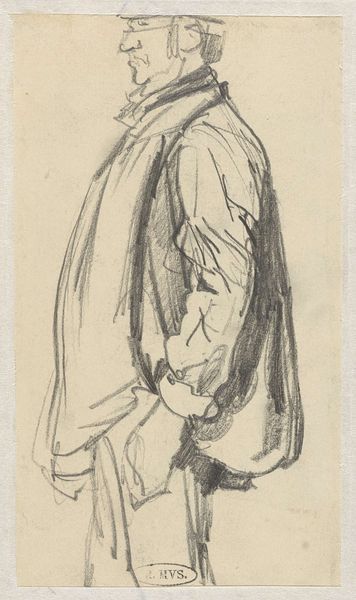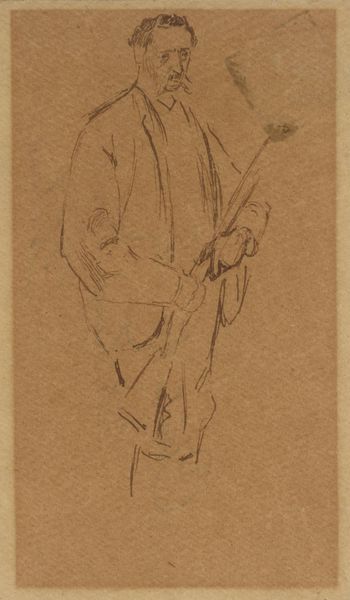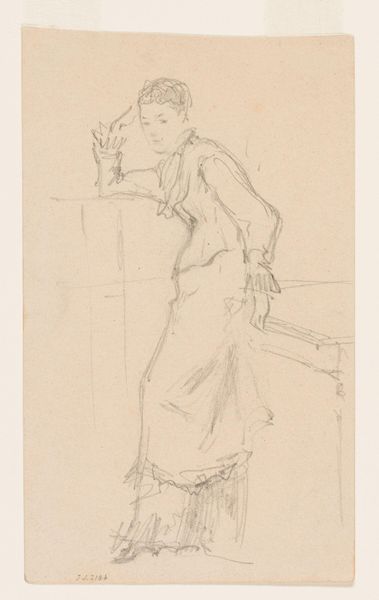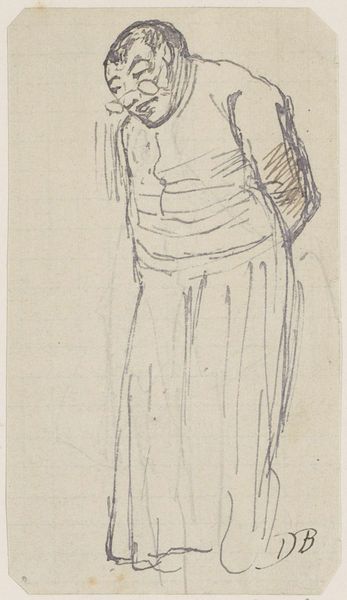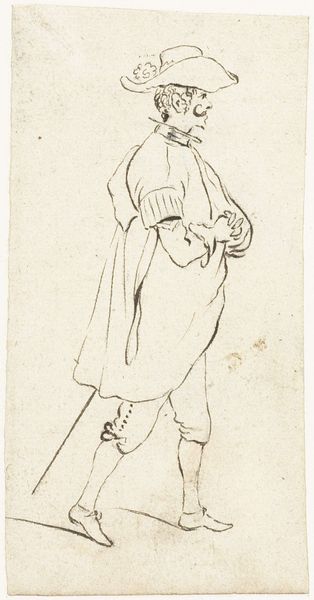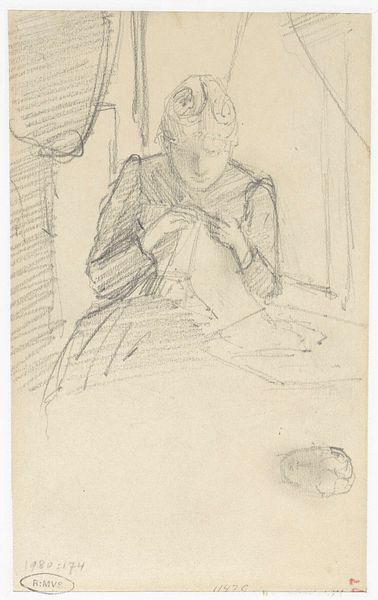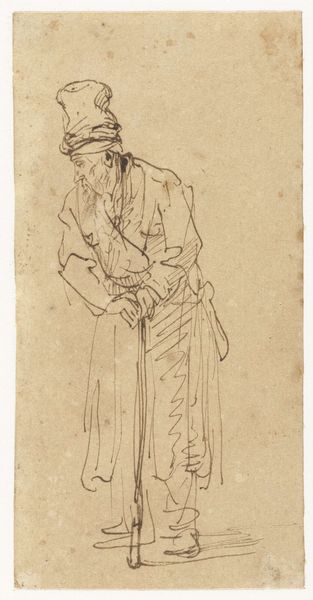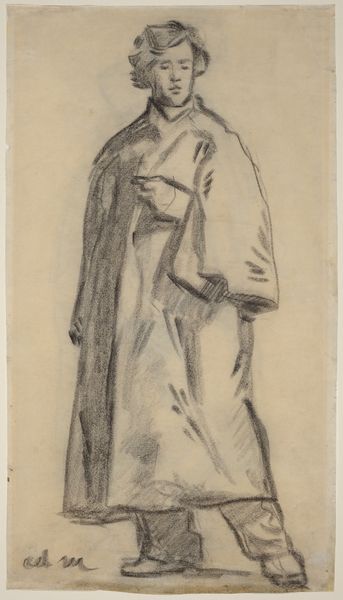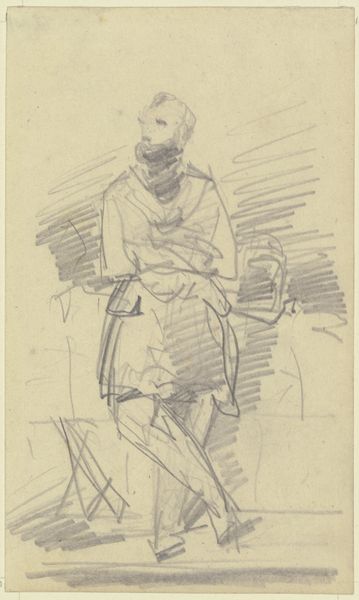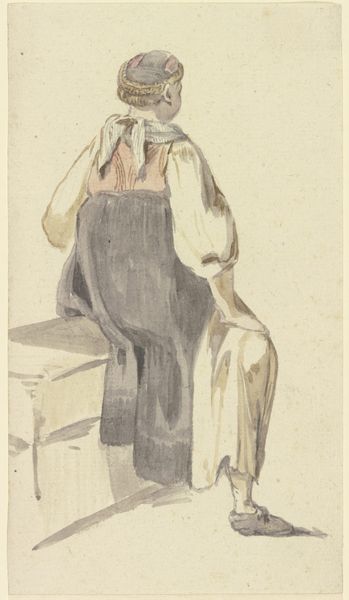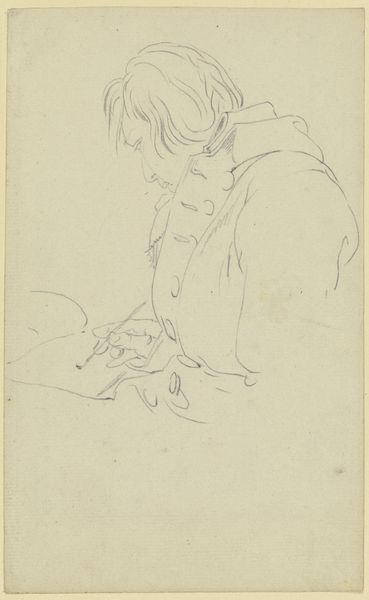
drawing, paper, ink
#
portrait
#
drawing
#
imaginative character sketch
#
impressionism
#
cartoon sketch
#
paper
#
personal sketchbook
#
ink
#
idea generation sketch
#
sketchwork
#
character sketch
#
ink drawing experimentation
#
sketchbook drawing
#
genre-painting
#
storyboard and sketchbook work
#
academic-art
#
sketchbook art
#
realism
Dimensions: height 233 mm, width 112 mm
Copyright: Rijks Museum: Open Domain
This drawing, Werkman in katoenververij, was made by Anthon Gerhard Alexander van Rappard in the Netherlands. The quick, free lines capture a worker perhaps during a break from his labor. The image presents us with a slice of life. The Netherlands in the late 19th century was undergoing rapid industrialization, and along with it, increasing social stratification. Rappard, a contemporary of Van Gogh, often depicted working-class subjects, reflecting a broader artistic interest in the lives of ordinary people and the impact of industrial labor on society. The cotton industry in particular was a major employer, but conditions could be harsh. Rappard’s choice of subject matter reflects a growing awareness of social issues, a theme prevalent in European art of the period. By documenting the lives of workers, artists contributed to a visual discourse that raised questions about labor conditions and social justice. To understand this piece fully, researchers might examine historical records of the Dutch cotton industry or study the correspondence between Rappard and Van Gogh, which is housed in the Van Gogh Museum. These resources can provide insights into the artist's intentions and the broader social context in which this drawing was created.
Comments
No comments
Be the first to comment and join the conversation on the ultimate creative platform.
